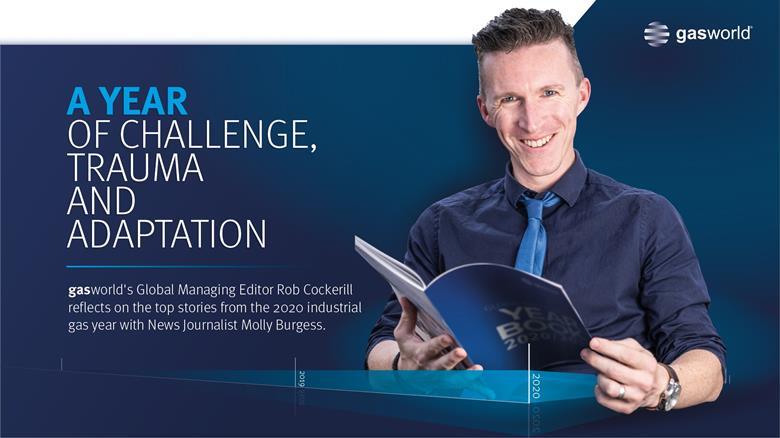


gasworld’s Global Managing Editor Rob Cockerill sits down with News Journalist Molly Burgess and reflects on the top stories from 2020 and shares his predictions for 2021.
Molly Burgess (MB): What would you say have been the top five stories from the 2020 industrial gas year?
Rob Cockerill (RC): Firstly, I would say the pandemic, clearly, has been the story of the year. Our industry has demonstrated not only its remarkable resilience but also how important it is to healthcare and all our lives. It has also demonstrated its agility and adaptation, at a time when those two traits arguably have never been more important.
Secondly, I would say the early end of Helium Shortage 3.0 and by extension, the shape of a new helium market to come from mid-2021 onwards. CO2 (carbon dioxide) shortages have been largely local to the US market, and helium had been the only key product in tight supply globally; so to see that come to an early end, is a welcome relief (even if it was realised due to the pandemic).
Thirdly, the sheer rise of clean fuels and decarbonisation at the forefront of our industry this year has been another major piece of the puzzle coming together, particularly where hydrogen is concerned. If we keep that puzzle analogy going, then it feels very much like we’ve seen all the colours of the hydrogen Rubik’s Cube come together in 2020.
My final two choices relate to technologies at the core of the industry, areas we’ve seen big developments in again this year. Firstly, there’s the news that Air Liquide had finalised agreement with Sasol to acquire the biggest oxygen production site in the world, in Secunda, South Africa. Not only is that a story in its own right, with Air Liquide set to own and operate the 16 air separation units (ASUs) of this site in addition to the unit it already operates at the facility, there is also an element of that aforementioned decarbonisation involved.
Air Liquide revealed its plans to reduce the CO2 emissions at the site arising from oxygen production by as much as 30-40%, which is a significant statement of intent. Further still, it was not the only site that Air Liquide identified emissions reductions targets for this year, clearly setting down a marker in reducing the carbon footprint of the technology at the heart of the industry itself. This is very much a trendline for Air Liquide and the industry as a whole.
Finally, we’ve seen more momentum building in the field of gasification technologies and projects this year, particularly from Air Products. Gasification is a long-established technology with a fascinating future, triggering mega-scale industrial gas projects, as we explored in an exclusive feature in the summer.
This is a path well-travelled by Air Products in the last couple of years, and the company has rapidly built an impressive portfolio in gasification technologies; it’s clearly an area of development that it has identified as a major growth driver in the years ahead. That path continued this year with news in May of a huge $2bn agreement to build a coal-to-methanol production facility in Indonesia, with air separation, gasification and syngas clean-up at the core – and that is why that announcement would be in my top five stories this year.
MB: Which of those would you say is the biggest? Why?
RC: I think it would be difficult to place one of those stories above another. What’s clear, however, is that many if not all are interlinked by common themes in decarbonisation or the effects of the Covid-19 pandemic.
MB: What are your predictions for the market/industry in 2021?
RC: Whilst I think we will see this new chapter for the industrial gases industry continuing to be written next year, I think the most immediate thing we’ll see is a focus on recovery and attempting to return to growth, globally.
The pandemic is not over, nor are its effects. So my guess is we’ll likely see a continuation of this current ‘new normal’ playing out for a little longer, while we transition back to the kind of business environment we were used to pre-Covid.
In terms of specific markets and hot topics, I think there’ll be plenty of pinch points and stories to keep a close eye on next year, which is what makes it so exciting and compelling for us to report on and analyse here at gasworld – and we’re more committed than ever to doing just that. Think helium, dry ice, CO2, hydrogen, circular economies, digitisation and more.
We expect that we will see a new helium market begin to emerge in the second half of 2021, for example, though in my experience delays are almost par for the course in helium projects, so let’s keep tracking that. If all the current talk is to be believed, then we may also see dry ice regularly in our headlines as it comprises one of the key components in delivering those vaccines upon which so much hope rests across the world. Clean fuels and green hydrogen will also continue to push forward. These are just three examples of what an incredibly exciting, industrious, and largely unpredictable year we have in store.